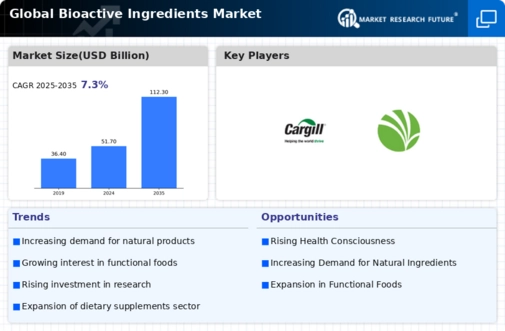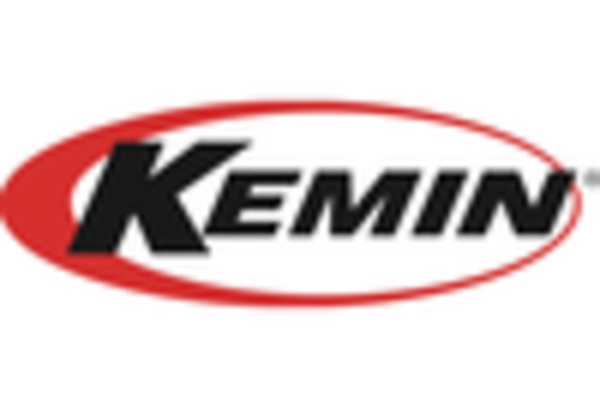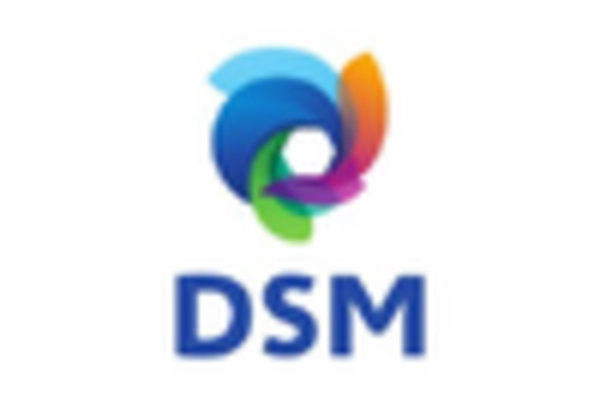Market Trends
Key Emerging Trends in the Bioactive Ingredients Market
The bioactive ingredients market is undergoing significant transformations, reflecting the changing dynamics of industries such as food and beverages, pharmaceuticals, and cosmetics. Bioactive ingredients are compounds derived from natural sources that exert a positive impact on health when consumed or applied. One prevailing trend in the bioactive ingredients market is the increasing consumer awareness and demand for health and wellness products. As individuals become more conscious of their well-being, there is a growing interest in products enriched with bioactive ingredients known for their health-promoting properties. This trend is particularly evident in the food and beverage industry, where products fortified with bioactive compounds, such as antioxidants, probiotics, and omega-3 fatty acids, are gaining popularity.
In the pharmaceutical sector, bioactive ingredients are playing a crucial role in drug development and disease prevention. Researchers are exploring the therapeutic potential of various bioactive compounds in addressing chronic diseases, inflammation, and metabolic disorders. This trend signifies a shift towards a more holistic approach to healthcare, with a focus on preventive and natural remedies. The pharmaceutical industry's increasing interest in bioactive ingredients is driving innovation and contributing to the development of novel drugs and treatments.
Furthermore, the cosmetic and personal care industry is witnessing a surge in the use of bioactive ingredients in skincare and beauty products. Consumers are seeking natural and sustainable alternatives, leading cosmetic manufacturers to incorporate bioactive compounds known for their skin-rejuvenating and anti-aging properties. Bioactive ingredients like vitamins, peptides, and botanical extracts are becoming key components in formulations designed to enhance skin health and appearance. This trend aligns with the broader movement towards clean and green beauty, where consumers prioritize products that are not only effective but also environmentally friendly.
In addition to the health and wellness focus, sustainability is emerging as a significant trend in the bioactive ingredients market. Consumers are increasingly mindful of the environmental impact of their choices, prompting industries to adopt more sustainable practices. This has led to a rise in the demand for bioactive ingredients sourced from renewable and eco-friendly raw materials. Manufacturers are exploring innovative extraction methods and investing in sustainable sourcing to meet the growing consumer demand for environmentally conscious products. This sustainability trend is reshaping the bioactive ingredients market and influencing the entire supply chain, from ingredient sourcing to product packaging.
Moreover, the market is witnessing a shift towards personalized nutrition and functional foods. As consumers seek products tailored to their individual health needs and preferences, the bioactive ingredients market is responding with a variety of personalized nutrition offerings. This includes functional foods and dietary supplements formulated with specific bioactive compounds to address targeted health concerns. The customization trend reflects the increasing recognition that individuals have unique nutritional requirements, and bioactive ingredients can play a role in meeting these specific needs.

















Leave a Comment